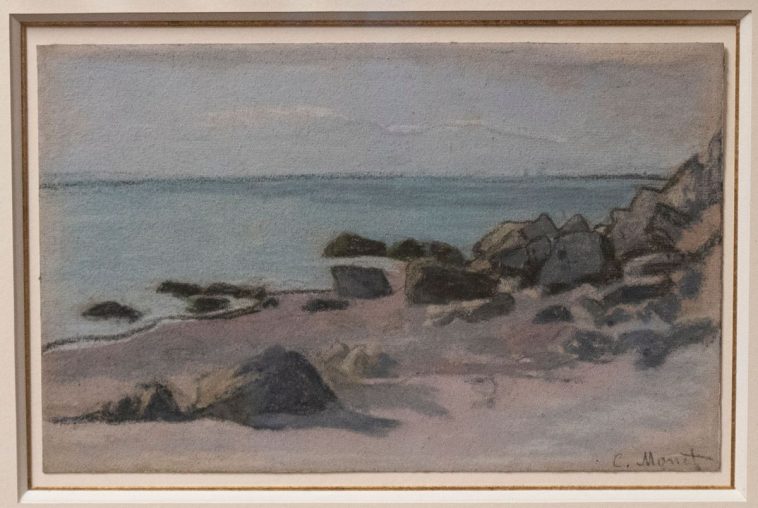An exquisite 1865 pastel artwork, Bord de Mer (Seaside), by the renowned artist Claude Monet is making a historic journey back to its rightful owners, the Parlagi family, after nearly a century. This symbolic restitution is the result of diligent efforts by the FBI, who recovered the artwork from a family in New Orleans. The art piece was wrongfully seized by the Gestapo from Jewish couple Hilda and Adalbert Parlagi, before they were forced to flee Vienna in 1938.
The timely handover of the beloved Bord de Mer will take place in a special ceremony in the vibrant city of New Orleans. Before the piece fell into the hands of the Gestapo, it was a treasured part of the art collection belonging to the Parlagis, who dwelled in Vienna before the unanticipated annexation of Austria by Germany in March 1938.
The Parlagi couple, along with their children, managed to escape Vienna a month following the Nazi Anschluss. They sought refuge in London, arriving in December 1938. They had to abandon nearly all of their precious belongings in Vienna, which included artworks by other celebrated artists such as Paul Signac, Camille Pissarro, Franz von Lenbach, and Rudolf von Alt.
From their newfound home in London, the Parlagis tried to orchestrate the transport of their left-behind possessions to their current location. Unfortunately, despite their desperate attempts, nothing made it to them in Britain. By August 1940, the Gestapo directed a full confiscation and subsequent sale of their property.
The unjust Nazi regime absorbed the proceeds from the property and artwork sales, leaving the Parlagis with no remuneration. ‘Our grandfather would have rejoiced at the news that this Monet is being restituted after his unrelenting efforts over the years,’ said Helen Lowe and Françoise Parlagi, granddaughters of the couple. They stated that this restitution day is truly extraordinary and immensely emotional, a day they never anticipated would come to pass.
Bela Parlagi, in his lifetime, undertook an immense struggle to reclaim his possessions, which tragically bore no fruit until his death in 1981. He was also unsuccessful in his bid for compensation. The quest for justice was then taken up by his descendants after his passing, who approached CLAE for assistance in 2014.
The commission, after engaging in extensive research, uncovered that the Monet painting had changed hands and was sold in 2019 in New Orleans. The information was promptly relayed to the FBI in 2021. Interestingly, two years post this discovery, the artwork resurfaced for sale once more at an art gallery located in Houston.
Members of the FBI’s art crime team based in New York and New Orleans, together with sleuths from the New York Police Department, got in touch with the current holders of the pastel. The individuals in possession of the artwork willingly agreed to give up the pastel for its rightful return to the Parlagi family.
James Dennehy of the New York FBI noted the significant cultural and family value embedded in the reclamation of the Monet. ‘While this Monet is undeniably valuable, its real value is inherent in what it portrays for the Parlagi family – a link to their past, their kin, and a history that was nearly obliterated.’
The FBI mentioned that it is also working to locate a 1903 watercolour piece by Paul Signac, titled Seine in Paris (Pont de Grenelle). This piece is connected to the same lineage and shares a similar controversial history as the Monet’s pastel, and any leads are being actively sought.
The CLAE, aligned with the FBI’s endeavours, has also declared it is on a quest to track down additional artworks by Pissarro, Spitzweg, Alt, and Miklos Barabas, which were unfairly stolen from the Parlagis by the Nazis and are still unaccounted for to this day.
The successful recovery and planned restitution of Monet’s Bord de Mer to the Parlagi family serves as a potent symbol of justice, long awaited and finally served. It also throws light on the countless pieces of art that were forcibly seized during the Nazi reign, reinforcing the need for continuous efforts to return them to their original homes.
For the Parlagi descendants, this restitution reflects a historic and deeply personal victory, a long-overdue reconnection with their past and their family’s treasures, nearly expunged by history. This Monet pastel symbolizes their resilience, their legacy, and their undying hope in the face of adversity.


